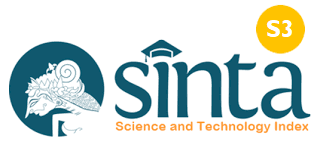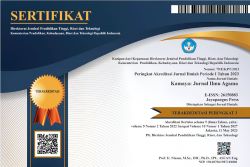Transformasi Pluralisme Dalam Agama Buddha: Buddhayana Sebagai Bhinneka Tunggal Ika
DOI:
https://doi.org/10.1234/kamaya.v7i1.17Keywords:
Transformation, Pluralism, Buddhayana, Bhinneka Tunggal IkaAbstract
Buddhism originates from a single source and can be adapted to various circumstances and spread in various regions with various languages to different tribes, peoples, times and environments. This allowed Buddhism to develop into different forms and figures. This researchaims to understand that diversity and pluralism in Buddhism can be seen and understood through the concept of Buddhayana. Buddhayana is an understanding that is non-sectarian, inclusive, universal and sees differences as the wealth ofBuddhism so that it can be studied according to the intelligence of every Buddhist. The method used to write this researchuses a qualitative research method through a descriptive approach and data obtained from literature review. In this study, the found that understanding pluralism in Buddhism requires the application of Buddhayana values, namely inclusiveness, non-sectarianism, contextualism, and respect for pluralism and universalism. Buddhayana's values are in line with the understanding and application of Unity in Diversity in Indonesia.
References
Abdullah, I. (2003). Politik Bhinneka Tunggal Ika dalam Keragaman Budaya Indonesia. Jurnal Masyarakat dan Budaya, 5(2), 1–13.
Abizar, M. (2019). Pluralisme Agama dalam Pandangan Abdul Mukti Ali. Ishlah: Jurnal Ilmu Ushuluddin, Adab dan Dakwah, 1(2), 185–212.
Bauto, L. M. (2016). Perspektif Agama Dan Kebudayaan Dalam Kehidupan Masyarakat Indonesia. (Suatu Tinjauan Sosiologi Agama). Jurnal Pendidikan Ilmu Sosial, 23(2), 11–25.
Bhikkhu Dharmavimala. (2012). Buddhayana dan Kontekstualisasi Agama Buddha di Indonesia. In Buddhayana Value. Jakarta: Keluarga Buddhayana Indonesia.
Chia, J. M. (2018). Neither Mahāyāna. Nor Theravāda: Ashin Jinarakkhita And The Indonesian Buddhayāna Movemen. History of Religions, 58(1), 24–63.
Dinarti, N. S., Dewi, D. A., & Furnamasari, Y. F. (2021). Meningkatkan Integrasi Nasional melalui Implementasi Nilai-Nilai Bhinneka Tunggal Ika. Jurnal Pendidikan Tambusai, 5(3), 7890–7899.
Fidiyani, R. (2013). Kerukunan Umat Beragama Di Indonesia (Belajar Keharomonisan dan Toleransi Umat Beragama Di Desa Cikakak, Kec. Wangon, Kab. Banyumas). Jurnal Dinamika HukumJurnal Dinamika Hukum, 13(3), 468–482.
Grace, Haudi, Rudy, & Suryanti. (2021). Buddhayana Sebagai Wujud. Toleransi Dan Bhinneka Tunggal Ika Dalam Kemasyarakatan Buddhis. Jurnal Ilmu Agama dan Pendidikan Agama Buddha (Jiapab), 3(1), 36–46.
Ismoyo, T., Rapiadi, R., & Susanto, S. (2021). Peran Majelis Buddhayana Indonesia (Mbi) Terhadap Penanaman Nilai Intersektarian Pada Masyarakat Buddha Di Lampung. Jurnal Pendidikan Buddha dan Isu Sosial Kontemporer (JPBISK), 3(1), 31–41.
Kristianto, P. E. (2018). Memahami Mahâyâna dan Hînayâna dalam Filsafat Timur. Gema Teologika, 3(1), 19–38.
Lestari, J. (2020). Pluralisme Agama di Indonesia: Tantangan dan Peluang Bagi Keutuhan Bangsa. Al-Adyan: Journal of Religious Studies, 1(1), 29–38.
Nikaya, D. (2009). Digha Nikāya Khotbah-khotbah Panjang Sang Buddha. Jakarta: Dhamma Citta Press.
Putri, L. O., & Dewi, D. A. (2021). Kedudukan Bhineka Tunggal Ika untuk Memperkokoh Negara Kesatuan Republik Idonesia di Masa Pandemi. De Cive: Jurnal Penelitian Pendidikan Pancasila dan Kewarganegaraan, 1(10), 1–7.
Sardi, Wijoyo, H., & Suherman. (2021). Pluralisme Dan Multikulturalisme Dalam Agama Buddha. Jurnal Ilmu Agama dan Pendidikan Agama Buddha (Jiapab), 3(1), 1–8.
Sitorus, J., & Iqbal, M. (2019). Majelis Buddhayana Indonesia Membangun Binadamai Antar Umat Beragama. Jurnal Ilmiah Sosiologi Agama (JISA), 2(1), 1–13.
Sudhamek, A. (2012). Eksplorasi Nilai-nilai Buddhayana (Sebuah telaah dan perspektif Transformatif - Leberatif). In Buddhayana Value. Jakarta: Keluarga Buddhayana Indonesia.
Suparlan, P. (2014). Bhinneka Tunggal Ika: Keanekaragaman Sukubangsa atau Kebudayaan? Antropologi Indonesia, 0(72), 24–37.
Downloads
Published
How to Cite
Issue
Section
License
Copyright (c) 2024 Kamaya: Jurnal Ilmu Agama

This work is licensed under a Creative Commons Attribution-ShareAlike 4.0 International License.
An author who publishes in the Kamaya : Jurnal Ilmu Agama agrees to the following terms:
- Author retains the copyright and grants the journal the right of first publication of the work simultaneously licensed under the Creative Commons Attribution-ShareAlike 4.0 License that allows others to share the work with an acknowledgement of the work's authorship and initial publication in this journal
- Author is able to enter into separate, additional contractual arrangements for the non-exclusive distribution of the journal's published version of the work (e.g., post it to an institutional repository or publish it in a book) with the acknowledgement of its initial publication in this journal.
- Author is permitted and encouraged to post his/her work online (e.g., in institutional repositories or on their website) prior to and during the submission process, as it can lead to productive exchanges, as well as earlier and greater citation of the published work (See The Effect of Open Access).
Read more about the Creative Commons Attribution-ShareAlike 4.0 Licence here: https://creativecommons.org/licenses/by-sa/4.0/.





